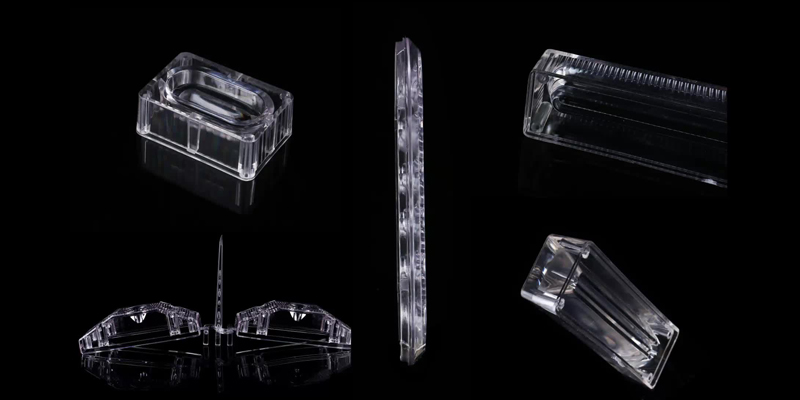Introduction
Injection moulding is a manufacturing process celebrated for its versatility. When it comes to using polycarbonate, a high-performance thermoplastic, the possibilities are endless. In this article, we will delve into the nuances of injection moulding polycarbonate, providing valuable insights for both novices and seasoned professionals.
Why Opt for Polycarbonate?
Polycarbonate is known for its exceptional strength, durability, and impact resistance, making it an ideal choice for producing intricate and complex parts. Its ability to withstand high temperatures and resist chemicals makes it suitable for applications in automotive, electronics, medical, and consumer goods industries. One of the key advantages of using polycarbonate in injection molding is its versatility. It can be easily molded into a variety of shapes and sizes, allowing manufacturers to create intricate designs and complex geometries. Additionally, polycarbonate offers excellent dimensional stability, ensuring that the final product maintains its shape and dimensions over time. Furthermore, polycarbonate's optical clarity and transparency make it a preferred choice for applications that require excellent visibility, such as automotive lenses and display screens. Whether you're looking to create durable parts, intricate designs, or transparent components, injection molding with polycarbonate offers numerous advantages that can elevate your manufacturing process to new heights.
Working Principle
Polycarbonate injection moulding is based on the fundamental principle of injecting molten polycarbonate resin into a mould cavity, allowing it to cool and solidify, resulting in the desired shape. This process comprises several key steps:
Melting: Solid polycarbonate pellets are fed into the machine's hopper, where they are heated and melted into a viscous, molten state.
Injection: The molten polycarbonate is injected into a precisely designed mould at high pressure, ensuring it fills all cavities and intricacies of the mould.
Cooling: After injection, the mould is rapidly cooled to solidify the polycarbonate, and the part is ejected.
Processing Advantages
Polycarbonate injection moulding offers a myriad of advantages that contribute to its popularity in various industries:
l Exceptional Properties: Polycarbonate possesses high impact resistance, optical clarity, heat tolerance, and excellent electrical insulation properties, making it ideal for diverse applications.
l Precision and Reproducibility: Injection moulding allows for intricate and consistent part production with minimal variations, ensuring high-quality components.
l Cost-Efficiency: High-speed production and minimal material wastage reduce overall production costs.
l Design Freedom: Complex geometries and fine details can be easily achieved with injection moulding, opening doors to innovative product designs.
l Durability: Polycarbonate parts are robust, weather-resistant, and capable of withstanding harsh environments, ensuring long-term durability.
The Crucial Role of Temperature
Polycarbonate's relatively high melting temperature, around 300°C (572°F), necessitates precise temperature control during injection moulding. Maintaining the correct temperature ensures proper material flow and prevents issues such as bubbles or warping. Employing a temperature controller is highly recommended to achieve optimal results.
Balancing Injection Speed and Pressure
Achieving a balance between injection speed and pressure is paramount for successful polycarbonate moulding. A slow injection speed can result in uneven material distribution, while excessive pressure can lead to overpacking. Adjust these parameters to suit your specific mould and product requirements for optimal outcomes.
Mould Design Matters
The foundation of successful polycarbonate injection moulding lies in a well-designed mould. Pay meticulous attention to gate design, venting, and cooling channels. Adequate venting prevents air entrapment, while efficient cooling reduces cycle times and prevents part distortion.
Preventing Moisture Absorption
Polycarbonate is hygroscopic, meaning it can absorb moisture from the environment. This can lead to defects and reduced mechanical properties in your final product. Safeguard against these issues by ensuring that your polycarbonate resin is properly dried before the injection process begins.
Selecting the Right Injection Moulding Machine
Choosing the correct injection moulding machine is a critical decision. Ensure it possesses the necessary tonnage and pressure capabilities for your project. Additionally, opt for a machine that offers precise control options to maintain temperature and pressure during the entire process.
Embrace Quality Control
Implementing a robust quality control process is vital to identifying and rectifying defects or inconsistencies in your polycarbonate parts. Regular inspections and testing protocols can help maintain the integrity of your final products, ensuring they meet your exact specifications.

Conclusion
Injection moulding polycarbonate demands meticulous attention to various factors, from temperature control to mould design. By mastering these critical aspects, you can unlock the full potential of this exceptional thermoplastic and produce high-quality, durable products that align with your specifications. Polycarbonate injection moulding, with the right techniques and a focus on detail, opens up a world of possibilities for your manufacturing endeavors, delivering both functionality and aesthetic appeal.
→ Get your polycarbonate injection molding solution.